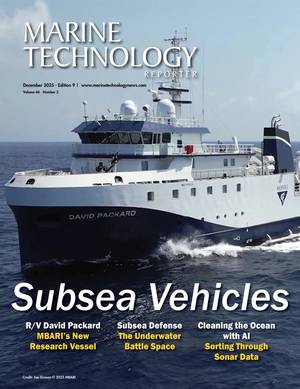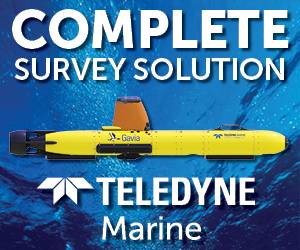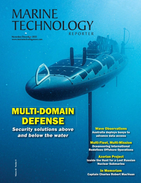
Thales Introduces New Sonar 76Nano for the Underwater Battle Space
.AI-enhanced acoustic detection: artificial intelligence accelerates target identification and decision-making with unprecedented precision.Digital native integration: fully compatible with existing defense infrastructure, enhancing interoperability across UK and NATO forces. Public debut with the Royal NavyOn December 17, Sonar 76Nano will make its official public debut with the Royal Navy at a technology demonstrator, marking a pivotal moment for maritime defense. This will allow naval personnel and experts to witness the prototype’s capabilities first-hand and engage with Thales’ leading

Babcock Marks Keel Laying for HMS Formidable, Makes US Submarine Deal
in the UK’s Type 31 frigate program, and the company announced an expanded partnership with U.S. defense contractor HII to support construction of Virginia-class submarines.The keel laying signals continued progress on the Type 31 program, under which five frigates are due for delivery to the Royal Navy within 10 years of contract signing. The ceremony saw the first modular section of the ship positioned over a coin, following naval tradition intended to bring good fortune to the vessel and its future crew.The event was attended by Babcock’s workforce, representatives of the Royal Navy,

SeaBot Maritime, University of Plymouth Sign MoU to Advance Marine Autonomy Collaboration
with the University of Plymouth. As an international leader in Flag State-recognized Remote USV Operator training, SeaBot Maritime has successfully trained maritime autonomy professionals across the Solent region in collaboration with the National Oceanography Centre, University of Southampton, the Royal Navy, and the Royal Marines. This expansion marks the next phase of growth for SeaBot Maritime and strengthens the network of autonomous maritime professionals across the UK. SeaBot Maritime and the University of Plymouth have signed a Memorandum of Understanding (MoU), marking the start of a strategic

Teledyne Marine Vehicles Expands Direct-to-Customer Service, Support in the United Kingdom
glider facility in Southampton at the prestigious National Oceanographic Center. The Fareham facility will support Teledyne’s full range of unmanned underwater vehicles, including Teledyne Gavia AUVs, Teledyne Webb Research’s Slocum gliders, and APEX profiling floats.To better support the Royal Navy and other UK customers, Teledyne has also hired dedicated service staff for the Raymarine Centre in Fareham and field support personnel in Plymouth, ensuring responsive expert assistance and the ability for Teledyne field staff to forward deploy with users.Teledyne’s investment in the UK
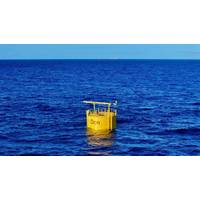
EU-Backed Project Deploys OTEC Demonstration Unit off Canary Islands
conducted in the UK have already verified the structure’s design at laboratory scale.The data will be combined with performance data from grid-connected OTEC power plants to de-risk future projects.The structure is named ‘Don’ in honor of Don Lennard, a British aircraft engineer and Royal Navy veteran who dedicated his life to advancing OTEC technology.Testing will continue over the coming months, with performance data expected in early 2026. If successful, the results will guide the design of full-scale OTEC systems capable of powering entire island grids and offshore facilities.&ldquo

At the Helm of the UKHO
, as well as contributing to the conversation through panel discussions and education resources.Mapping, particularly on the seafloor, also plays a crucial role in maritime defense and subsea infrastructure. "As part of the Ministry of Defence, the UKHO plays an important role in supplying the Royal Navy and all UK defense vessels with the information needed to support its operations and navigate safely."To provide the most comprehensive picture of UK waters, the UKHO works closely with other government partners to promote the sharing of seabed mapping data. "This includes leading initiatives
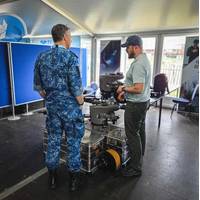
Blueye Robotics to Deliver ROVs to the Netherlands Royal Navy
Blueye Robotics, together with local partner RVI Tools, has secured a major international contract to supply underwater remotely operated vehicles (ROVs) to the Netherlands Royal Navy.The ROV systems will be delivered with advanced capabilities tailored for military engineers and mine countermeasure (MCM) teams.The awarded contract highlights the increasing demand for compact, user-friendly underwater systems to support complex military operations in inshore and coastal environments. The ROV will be used in a wide range of mission profiles including:Diving operations: supporting reconnaissance,
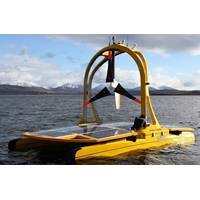
Robosys Wins Contract For USV Integrated Maritime Autonomy Solution
solution for an ASV C-Enduro USV.Robosys will provide its VOYAGER AI Autonomous Navigation System (ANS) to the University, to seamlessly operate a C-Enduro Unmanned Surface Vessel (USV).The C-Enduro USV, named 'Bauza,' undertakes hydrographic and oceanographic surveying and training. The Royal Navy has awarded the University of Plymouth a contract to supply the USV, which will be integrated with Robosys' VOYAGER AI software, enabling it to efficiently, intelligently, and safely perform over-the-horizon data gathering operations.Robosys Automation’s VOYAGER AI Autonomous Navigation
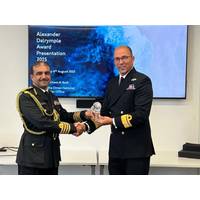
Captain Ahmed Al Badi receives 2025 Alexander Dalrymple Award
Captain Ahmed Al Badi.Captain Ahmed’s vision is for ONHO to benefit all Omanis, growing the team by employing several civilian Omani personnel and enabling the careers of female hydrographers to flourish. In his current position, Captain Ahmed represents the National Hydrographic and Royal Navy of Oman, across several Omani Ministries. As a result, the importance of hydrography for economic and social growth and sustainability is continually highlighted within the framework of the Oman Vision 2040. The Alexander Dalrymple Award has been presented annually since 2006 by the UK Hydrographi

 December 2025
December 2025
